To equip students with the skills to tackle the grand challenges demands a new approach to education. John Underhill discusses the role that doctoral training needs to play in addressing decarbonisation
Underhill, J., Revamping doctoral training for a decarbonised future.
Geoscientist 29 (8), 10-15, 2019
https://doi.org/10.1144/geosci2019-044;
Download the pdf here
At a time when prospective students are being turned off by the perceived association of geologists with ‘dirty’ industries, energy resources and environmental damage, it is rather ironic yet apposite that geoscientists and their skill sets are a vital part of the solution, not just the cause.
While a better understanding of the subsurface was central to the carbonisation of our environment through the exploration, extraction and use of fossil fuels, the same skills and expertise that developed these resources can significantly contribute to decarbonisation solutions.
To address this issue (and the other grand challenges faced by humanity), and to provide a legacy and new generation of relevant, skilled geoscientists, we must reassess how we educate and undertake research. As the latest reports have highlighted (GETI, 2019: OPITO, 2019), the landscape is changing rapidly. There is a skills gap that needs addressing and new methods of training that embrace new technologies and innovation are required.
To meet the demand, we need to change and evolve our geoscience provision and teaching to equip students. This means not just building geological and engineering expertise, but also giving students a broader bandwidth that includes elements relating to economics, engineering, social science, science communication and media relations.
The National Environment Research Council (NERC) Centre for Doctoral Training (CDT) model, of the type currently governed and run by Heriot-Watt University (
https://www.nerc-cdt-oil-and-gas.ac.uk/) is extremely well placed to adapt and evolve to meet the challenge. Awarded in 2013 and launched the year after (Fig. 1), the CDT programme is an exemplar of how post-graduate research and training can evolve to move away from a specific oil-and-gas remit that it was originally ascribed, to address some of the key issues facing us and the changing world that we live in today.
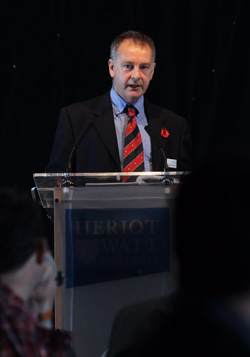 Fig 1: The CDT’s Academic Director, Professor John Underhill at its official launch in 2014
Fig 1: The CDT’s Academic Director, Professor John Underhill at its official launch in 2014
Reducing the carbon footprint
As the world’s population grows and becomes more prosperous, there is an ever-increasing need to provide more energy to heat and light homes, fuel transport and power economic growth. Such development comes with a large carbon footprint that drives climate change, so we must ensure that as development progresses, it does so with reduced greenhouse gas emissions (Lovell, 2010; Stephenson, 2018). It is imperative that along with our commitment “to keep the lights on” and also achieve ambitious targets for converting to electric cars, we must also have in place a public mandate and social license to operate.
Additionally, as demonstrated by the major power outage that affected large swathes of the UK last month, the complex inter-linkage of energy sources can strain systems to the point where they fail, highlighting the key challenge to continue to secure and carefully manage our energy supplies as we decarbonise.
To meet the need for a sustainable, low-carbon energy future, measures are being introduced throughout the entire energy conversion chain, from the more efficient utilization of fossil-fuel resources for power generation and transportation, to improvements in consumption through energy efficiency. Consequently, more countries are developing their renewable-energy resource capabilities and introducing low-carbon, clean energy solutions, in keeping with the United Nations' blueprint for a sustainable future for all (UN Sustainability Goals, 2019).
The UK is leading the way, with a number of initiatives taken and papers published by the UK and Scottish Governments (such as the HMG Industrial Strategy 2017; HMG Clean Growth Strategy 2017; BEIS Energy & Climate Plan 2019; RSE Energy Inquiry Report, 2019; Scottish Energy Strategy 2017), as well as by influential organisations like the Committee for Climate Change (such as
Net Zero: The UK’s contribution to stopping global warming 2019).
The outcomes of several recent workshops, including a major Geological Society conference, also help to promote the decarbonisation agenda (such as the AAPG Energy Transition Forum 2018; The GSL Bryan Lovell Meeting 2019; Stephenson,
Geoscientist 2019; Launch of EAGE’s Decarbonisation Special Interest Group in June).
Crucial role for geoscience
The geoscience of the subsurface clearly has a vital role to play in the decarbonisation world, through electricity production, industry, transport and heating. We need a combination of state-of-the-art technology, improvements to efficiency and low-carbon fuel switching to achieve both ambitious UK and international climate change and decarbonisation targets.
Some of the specific areas where geoscience will play a crucial role are in subsurface storage, geothermal energy, the sustainable and safe extraction of metals and mineral resources. An understanding of subsurface complexity can also provide essential quantification and an important sense check on remaining or potential resources (Underhill,
The Conversation 2017a; Underhill & Corbett,
The Conversation 2017) that may extend the life of productive basins.
Subsurface storage
For some industrial processes, such as steel manufacturing, cement production, and refining, all of which have a large carbon emissions footprint, subsurface carbon-capture technologies are the only viable decarbonising solution. Whether those solutions involve converting to a hydrogen-based economy from a methane-driven one (like the H21 project for Leeds), the continued extraction of oil and gas from the UK Continental Shelf (UKCS) as a bridge during the low-carbon transition, or an attempt to decarbonise the country’s industrial clusters in Humberside, Teeside, the Midland Valley, Merseyside, the Thames Valley and South Wales, carbon storage is needed.
It is therefore crucial that we select the right sites for safe long-term storage, since selection of the wrong ones could lead to failure and loss of credibility (Underhill,
The Conversation 2017b). That need demands geoscientific expertise to accurately characterise and parameterise the geology of the traps and the reservoir-seal pairs of the depleted fields or saline aquifers, and test which are suitable as potential carbon storage sites.
Similarly, if nuclear power generation is going to form a significant part of the UK’s energy mix, as seems likely (e.g. with the build of Hinkley Point), it is essential that the safe geological storage of its waste products is addressed.
Geothermal energy
Use of geothermal energy for electricity, heating and cooling has great potential, but irrespective of whether high-heat sources (such as in Cornwall and the Cairngorms) or low-enthalpy ones (like the re-use of old coalmines) are promoted, an understanding of the subsurface is required.
Successful deployment of coal mines as low-enthalpy heat sources could address one of the leading social challenges in the UK today, fuel poverty, which leads to more than a quarter of households struggling to make ends meet (Underhill,
The Scotsman 2018; Adams
et al., Geoscientist 2019). The largest concentration of households affected lie in densely populated urban areas that grew up around heavy industry, coal mining and manufacturing centres. Many of these have long since reduced in size, or closed, leaving a landscape and community blighted by high unemployment and deprivation.
Despite the demise in the use of coal for fires for domestic heat, a major benefit is that most of the minefields are located close to and often directly beneath the large conurbations where the problem is most acute. Significantly, unlike much of the subsurface, where natural porosity, permeability or fracture patterns dictate flow, water can pass through a coalpit’s trellised network of adits and shafts more easily since they are akin to fluid ‘super highways’.
It’s ironic and perhaps paradoxical therefore to suggest that a solution to the fuel poverty crisis could come from the most polluting, black and dirty fossil fuel that we, as a nation, have worked so hard to remove from our energy mix. However, it could be a case of the old black becoming the new green.
Sustainable metals and mineral resources
To source the raw materials for electric cars, wind farms, solar panels and other technological needs, there has to be a sustainable and secure supply of mined materials (such as cobalt, lithium and rare earth elements), an ambition that looks extremely challenged. At present, the sources of key minerals are in places like the Democratic Republic of Congo and the “Lithium Triangle” that straddles the borders of Argentina, Chile and Bolivia (Fig. 2). Given the laudable but ambitious Government targets that have been set to electrify transport, the question is “can these source areas meet the demand in a sustainable way and, if not, are there other regions that could be developed without causing environmental damage?”
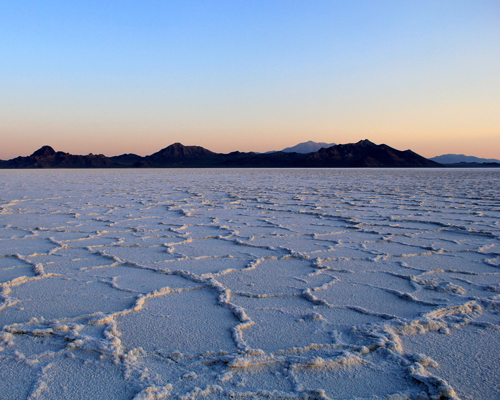 Fig 2: Significant lithium resources exist in brine deposits associated with giant salt flats found in Argentina, Bolivia and Chile—South America’s ‘lithium triangle’. (Image by whitfieldink from Pixabay)
Fig 2: Significant lithium resources exist in brine deposits associated with giant salt flats found in Argentina, Bolivia and Chile—South America’s ‘lithium triangle’. (Image by whitfieldink from Pixabay)
The Centre for Doctoral Training
The UK has considerable experience in subsurface development and a wealth of knowledge that will be invaluable as we address the decarbonisation challenge. It is essential that we train future generations in the skills required for the emerging geoscience sectors and subsurface industries. However, to deliver such a workforce requires support for geoscience education. In particular, continued support for doctoral training that focuses on equipping students with advanced technical and scientific skills is vital. The benefit and impact of such support is proven by the thematic CDT model, a hugely successful, collaborative initiative involving 17 UK Universities, two Natural Environment Research Council (NERC) Research Centres (the British Geological Survey (BGS) and National Oceanography Centre (NOC)) and eight industry partners.
Originally funded through a £3 million award from NERC that enabled the recruitment of 30 four-year PhD students in each of its first three years, the attraction of the CDT model has leveraged an additional £11.5 million to enable its extension for two further years. £1.5 million of that has come from industry to support its training programme, £6 million from university scholarships and £1 million through the Department of Business, Energy and Industrial Strategy (BEIS) National Productivity Investment Fund (NPIF) initiative that has financed additional studentships in Clean Energy and Artificial Intelligence (AI).
That support has now enabled the extension of the CDT programme for two years beyond its original period. Over 120 PhD students enrolled on the programme, the first cohort of whom graduated in the past year. The scheme has proved popular, as exemplified by the gender balance (>40% women have enrolled) and there is a keen competition for PhD places in the CDT program.
Addressing the skills gap
The training agenda is central to the programme’s success and adds value to a student’s PhD research focus. It consists of 20 weeks of bespoke modules undertaken by the students. The component parts cover a spectrum of topics with the dual aim of placing the student’s individual specialist PhDs in their wider context and introducing the students to the full bandwidth of the research challenges faced in the subject area.
There is a mix of mandatory and optional modules, which are under continuous review. Reassessment led to the inclusion of more topics in environmental impact and regulation, as well as a substantial field-based component to address gaps in, the pressures upon and the demise of training in these areas in undergraduate and industry development programmes.
The Geological Society recognised the quality and relevance of the training provided by the CDT, as well as the good governance afforded by its committees (Fig. 3) and Industrial Advisory Board, by bestowing the course with Accreditation. The fact that those graduating from the scheme are securing jobs in industry, academia, policy and communications attests to the fact that the training they received enhances their employability.
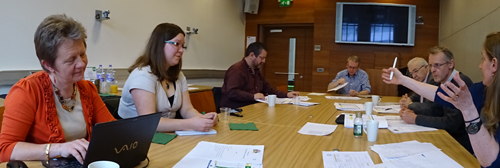 Fig 3: The CDT has a very strong governance structure, with committees overseeing the management, training and research of the programme. There is also an Industry Advisory Board and Graduate Committee to provide external input and provide direct feedback from the students.
Fig 3: The CDT has a very strong governance structure, with committees overseeing the management, training and research of the programme. There is also an Industry Advisory Board and Graduate Committee to provide external input and provide direct feedback from the students.
The benefit of the CDT approach means that students feel a part of a bigger connected community and a UK-wide initiative, as well as their host university’s graduate school. The combination of lab- and field-based residential classes (Figs 4, 5) generates a strong “esprit de corps”. This strong network will undoubtedly serve the students well throughout their subsequent careers. We have also seen more cross-university, collaborative, co-supervised projects that tackle key issues that spring up.
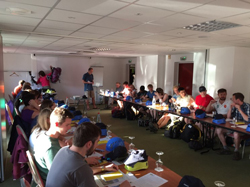 Fig 4: The CDT consists of a mix of field tuition and classroom-based practicals
Fig 4: The CDT consists of a mix of field tuition and classroom-based practicals
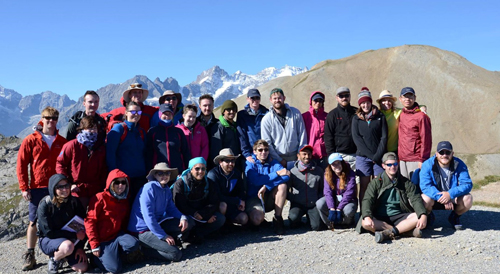
Fig 5: The CDT students attending the field course examining an exhumed continental margin in the Alps
All students present posters and talks at an annual conference. The meeting is now an important date in the geoscience calendar, with nearly 200 attendees last year (Fig. 6). An additional benefit of having such ‘critical mass’ is that the CDT effectively becomes a one-stop-shop in the chosen theme. That value has seen UK Research & Innovation (UKRI) and individual research councils, like NERC, being able to convene meetings with all the key players from Government, industry and academia in one room (Fig. 7). The CDT has also gained significant political traction, and has hosted visits from the Secretary of State for Scotland and the respective UK and Scottish Energy Ministers (Figs 8, 9).
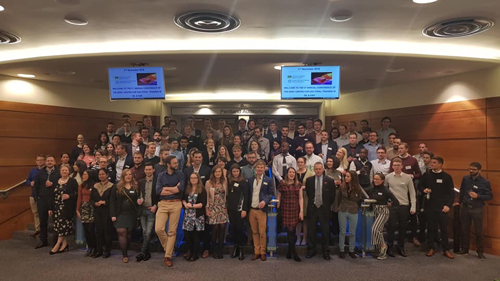 Fig 6: The CDT students attending the Annual Conference in Edinburgh
Fig 6: The CDT students attending the Annual Conference in Edinburgh
 Fig 7: NERC’s inaugural workshop on decommissioning was brokered by the CDT, held in Aberdeen and subsequently led to a call for proposals
Fig 7: NERC’s inaugural workshop on decommissioning was brokered by the CDT, held in Aberdeen and subsequently led to a call for proposals
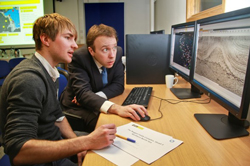 Fig 8: The UK Energy Minister, Matt Hancock, visited the CDT and is seen learning about the challenges of subsurface mapping in the Southern North Sea.
Fig 8: The UK Energy Minister, Matt Hancock, visited the CDT and is seen learning about the challenges of subsurface mapping in the Southern North Sea.
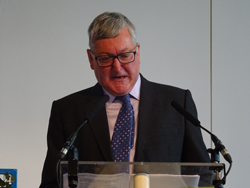 Fig 9: Scottish Energy Minister, Fergus Ewing, addressing the CDT Conference in 2015
Fig 9: Scottish Energy Minister, Fergus Ewing, addressing the CDT Conference in 2015
Collective effort
It is evident that the commitment to decarbonise requires the provision of skilled practitioners, who have the pre-requisite technical expertise across the whole spectrum of energy systems. We will need a wide variety of geoscientific skills to evaluate safe carbon storage, supervise decommissioning and to examine the impacts and potentials of renewable sources, be they geothermal, wind, wave, hydro, solar, nuclear or other novel sources, such as cold energy or heat storage.
We will continue to need people who can undertake the environmental monitoring of oil and gas extraction (both conventional and unconventional, such as shale gas), including human-induced seismicity, as well as those who are best placed to extend the life of mature basins like the UKCS as we seek to move away from our fossil fuel dependence.
The CDT’s training provision already embraces innovation in areas like digital technologies, augmented reality, virtual reality, immersive 3D vision, machine learning and artificial intelligence (Fig. 10), but is open, keen and able to develop doctoral skill sets in these areas.
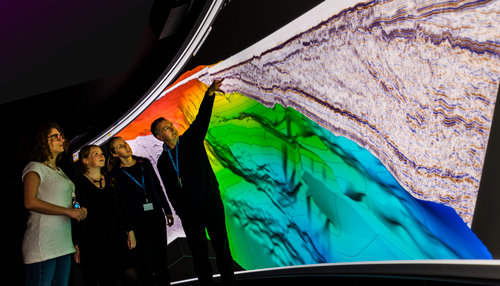 Fig 10: Use of new visualization and digitalization technologies will be vital in characterizing the subsurface. The image was taken in Heriot-Watt’s Ogilvie-Gordon 3D Audio-Visualisation Centre, depicts the subsurface geology of the Inner Moray Firth in the North Sea and the disposition of the Captain Sandstone, a saline aquifer that has been proposed as a candidate for Carbon Storage. Photograph used with permission of Stavros Vrachliotis.
Fig 10: Use of new visualization and digitalization technologies will be vital in characterizing the subsurface. The image was taken in Heriot-Watt’s Ogilvie-Gordon 3D Audio-Visualisation Centre, depicts the subsurface geology of the Inner Moray Firth in the North Sea and the disposition of the Captain Sandstone, a saline aquifer that has been proposed as a candidate for Carbon Storage. Photograph used with permission of Stavros Vrachliotis.
To achieve all of this demands a collective effort and a collaborative partnership between research and training providers. It is essential to break down academic silos and accept that no one place has all the solutions. As the CDT model demonstrates, when collaboration is effective, the whole is greater than the sum of the parts. The scale of the geo-energy and decarbonisation challenge dictates that we adopt such an approach. The CDT stands ready to build upon its strong foundation to address the need to decarbonise.
Professor John Underhill holds the Chair of Exploration Geoscience at Heriot-Watt University, sits on the Scottish Government’s Science Advisory Council (SSAC) and is part of the Natural Environment Research Council (NERC)’s UK Geoenergy Observatories Science Advisory Group (GSAG) that is overseeing the delivery of the UK Geoenergy Observatories (UKGEOS) project. John is the Academic Director of the Centre for Doctoral Training (CDT); e-mail: [email protected]
References
Adams, C., Monaghan, A. & Gluyas, J. (2019) Mining for heat. Geoscientist 29 (4), 10-15;
https://doi.org/10.1144/geosci2019-021
Committee on Climate Change (2019) Net Zero: The UK’s contribution to stopping global warming. May 2019, pp. 275;
https://www.theccc.org.uk/wp-content/uploads/2019/05/Net-Zero-The-UKs-contribution-to-stopping-global-warming.pdf
Department for Business, Energy and Industrial Strategy (2019) The UK’s Draft Integrated National Energy and Climate Plan (NECP);
https://assets.publishing.service.gov.uk/government/uploads/system/uploads/attachment_data/file/774235/national_energy_and_climate_plan.pdf
Energy Transition: Competing in a new energy landscape. AAPG Energy Transition Forum 2018. 5-6 September, Amsterdam, The Netherlands;
https://www.aapg.org/Portals/0/docs/ETF/etf-2018-summary-report.pdf
GETI (2019) The Global Energy Talent Index Report 2019;
https://www.getireport.com/reports/2019/
HM Government Industrial Strategy (2017) Building a Britain fit for the future;
https://assets.publishing.service.gov.uk/government/uploads/system/uploads/attachment_data/file/664563/industrial-strategy-white-paper-web-ready-version.pdf
HM Government Clean Growth Strategy (2017) Leading the way to a low carbon future;
https://assets.publishing.service.gov.uk/government/uploads/system/uploads/attachment_data/file/700496/clean-growth-strategy-correction-april-2018.pdf
H21: Leeds City Gate, 2016;
https://www.northerngasnetworks.co.uk/wp-content/uploads/2017/04/H21-Report-Interactive-PDF-July-2016.compressed.pdf
Lovell, B.P.J. (2010) Challenged by Carbon: The Oil Industry and Climate Change. 230pp. Cambridge University Press. ISBN: 0521145597
NERC Centre for Doctoral Training (CDT) in Oil & Gas;
https://www.nerc-cdt-oil-and-gas.ac.uk/
OPITO (2019) UKCS Workforce Dynamics: The Skills Landscape: 2019-2025;
https://www.opito.com/policy-and-research/research/the-skills-landscape
RSE Inquiry (2019) Scotland's Energy Future;
http://www.rse.org.uk/wp-content/uploads/2019/06/Energy-Report-for-Web-2.pdf
Scottish Energy Strategy (2017) The future of energy in Scotland;
https://www.gov.scot/binaries/content/documents/govscot/publications/strategy-plan/2017/12/scottish-energy-strategy-future-energy-scotland-9781788515276/documents/00529523-pdf/00529523-pdf/govscot%3Adocument/00529523.pdf
Stephenson, M. (2018) Energy and Climate Change: An Introduction to Geological Controls, Interventions and Mitigations. 206pp. Elsevier. ISBN:9780128120217
Stephenson, M. (2019) Geoscience and the two-degree world. Geoscientist 29 (5), 24-25;
https://doi.org/10.1144/geosci2019-029 https://doi.org/10.1144/geosci2019-029
The Role of Geoscience in Decarbonisation. The Geological Society of London, Bryan Lovell Meeting 2019. 21-23 January, London, UK;
https://www.geolsoc.org.uk/~/media/shared/documents/Events/2019/Bryan%20Lovell%20Meeting%202019_FINALv6_EL.pdf
Underhill, J.R. (2017a) There may be a huge flaw in UK fracking hopes – the geology. The Conversation;
https://theconversation.com/there-may-be-a-huge-flaw-in-uk-fracking-hopes-the-geology-80591
Underhill, J.R. (2017b) Storing carbon under the North Sea: are wrong sites being looked at?
The Conversation https://theconversation.com/storing-carbon-under-the-north-sea-are-wrong-sites-being-looked-at-88337
Underhill, J.R. (2018) Coal mines have an eco-friendly future. The Scotsman;
https://www.scotsman.com/news/opinion/john-underhill-coal-mines-have-an-eco-friendly-future-1-4815190
Underhill, J.R. & Corbett, P. (2017) Is Britain’s ‘largest oil discovery in decades’ all it’s cracked up to be? The Conversation;
https://theconversation.com/is-britains-largest-oil-discovery-in-decades-all-its-cracked-up-to-be-75482
United Nations (2019) Sustainable Development Goals;
https://www.un.org/sustainabledevelopment/sustainable-development-goals/